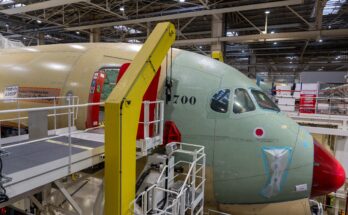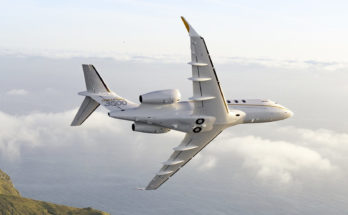Boeing announced plans to end production of the 767-300F freighter in 2027, after which the 767-2C is to be the sole 767 version in production. The company indicated that production of the -300F will end once current orders for the freighter are fulfilled. As of the end of September 2024, Boeing had unfilled orders for 29 767-300Fs, including 17 for UPS and 12 for FedEx Express.
In addition, Boeing has postponed the initial delivery of the new 777-9 from 2025 to 2026. The manufacturer also delayed initial delivery of the 777-8F freighter from 2027 to 2028. The 777-9 and 777-8F are members of Boeing’s new 777X family of commercial airliners.
These actions are among several announced by Boeing as the company looks to focus its resources amid a challenging industry environment and an ongoing strike by Boeing workers represented by the International Association of Machinists and Aerospace Workers (IAM).
The 777-9 can accommodate 426 passengers in a typical two-class seating configuration. The 777-8F has a gross structural payload of 118.2 metric tons and a net revenue payload of 112.3 metric tons.
As of the end of September 2024, Boeing had orders for 481 aircraft in the 777X series, including 43 777-8s, 55 777-8Fs, and 383 777-9s. The 777-8, from which the 777-8F freighter is derived, has longer range but lower seating capacity than its 777-9 sibling. The 777-8 can seat 395 passengers in two classes. Boeing has previously indicated that service entry of the 777-8 passenger model will not occur until at least 2030.
Only a few months ago, in May 2024, the 767-300F had appeared to receive new life when the newly-passed U.S. Federal Aviation Administration (FAA) reauthorization act contained an exemption for new 767-300Fs from FAA emissions requirements until 2033. A February 2024 FAA regulation will require large commercial airliners produced from January 2028 to meet new U.S. Environmental Protection Agency (EPA) greenhouse gas emissions standards. These emissions standards and the associated timeline match International Civil Aviation Organization (ICAO) standards. The -300F does not meet the new standards.
The 767-2C serves as the basis for Boeing’s KC-46A military tanker, Boeing modifies the 767-2Cs into KC-46As for the U.S. Air Force and export customers.
Production of the 767-2C will continue beyond 2027. Boeing builds 767-2C airframes on the same assembly line in Everett, Washington, that is used for the 767-300F.
Raymond Jaworowski currently co-authors three of Forecast International's best-selling products: Civil Aircraft Forecast, Military Aircraft Forecast, and Rotorcraft Forecast. As a contributor to Aviation Week & Space Technology's Aerospace Source Book, he has authored Aircraft Outlooks, and provided input for the publication's Aircraft Specifications tables. Raymond has represented Forecast International at numerous conferences and trade shows, often as a featured speaker. He is a member of the American Helicopter Society.




